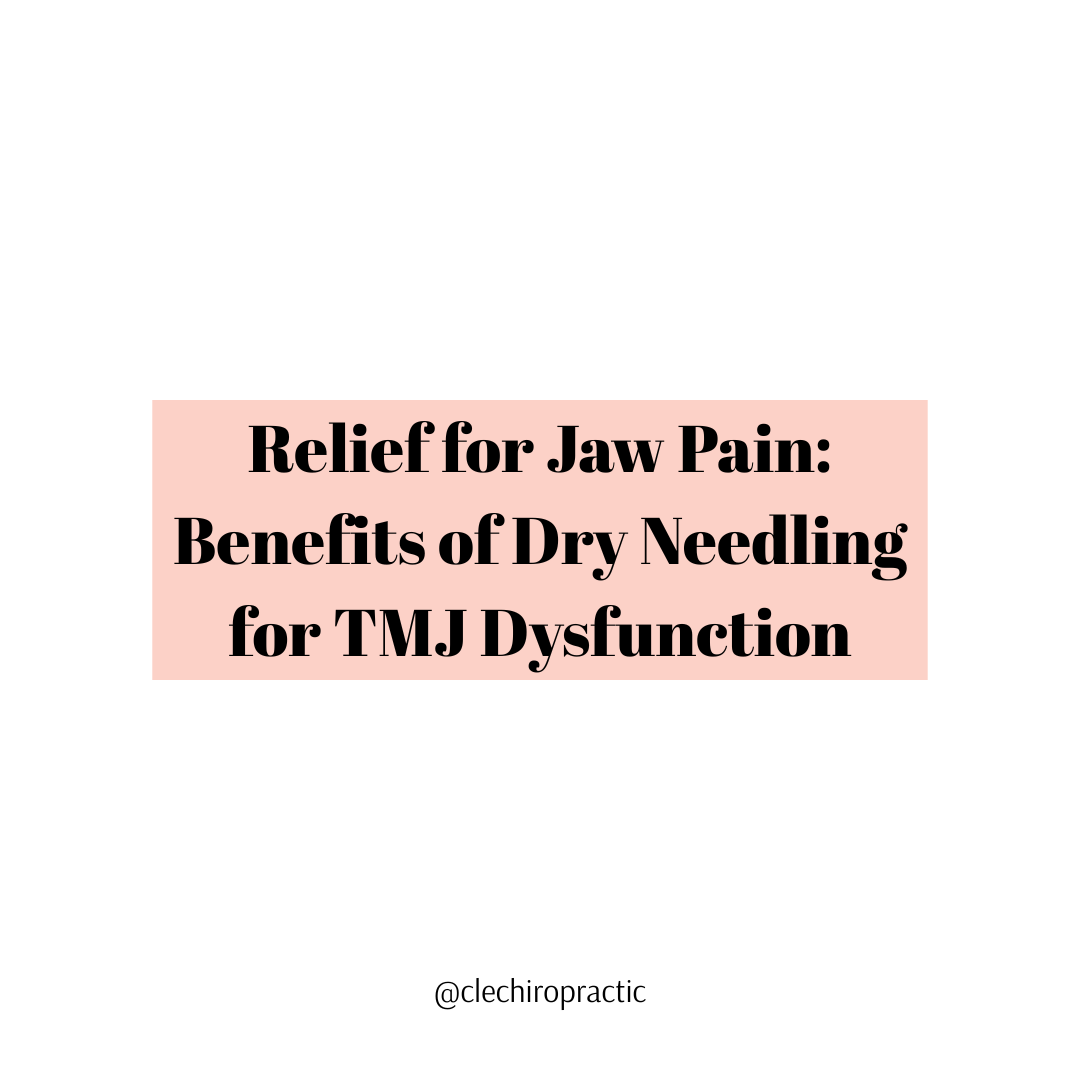Relief for Jaw Pain: The Benefits of Dry Needling for TMJ Dysfunction
If you've ever experienced jaw pain, clicking, or tightness when chewing or talking, you're not alone. Temporomandibular joint (TMJ) dysfunction affects millions of people and can significantly impact daily life. While there are many ways to address TMJ pain, one emerging and effective technique is dry needling.
As a chiropractor who works closely with patients struggling with tension, pain, and dysfunction in the jaw, I’ve seen dry needling make a noticeable difference. So, let’s dive into what it is and how it can help relieve TMJ symptoms.
What is Dry Needling?
Dry needling involves the use of a thin, sterile needle inserted into trigger points (tight bands or knots) in the muscles. The goal is to release muscle tension, improve blood flow, and reduce pain by targeting the neuromuscular system.
How Does TMJ Dysfunction Develop?
TMJ dysfunction can stem from a variety of causes, including:
· Teeth grinding (bruxism)
· Jaw clenching due to stress
· Poor posture, especially in the neck and shoulders
· Trauma to the face or jaw
· Dental work or misalignment
These factors can lead to muscle tightness and inflammation around the jaw joint, contributing to headaches, earaches, facial pain, and difficulty opening or closing the mouth.
Benefits of Dry Needling for TMJ Pain
Here’s how dry needling can help people suffering from TMJ dysfunction:
1. Releases Tight Muscles
Dry needling targets the trigger points in key muscles such as the masseter, temporalis, and lateral pterygoid—muscles that control jaw movement. By releasing tension in these areas, patients often notice a significant reduction in pain and tightness.
2. Reduces Inflammation
By increasing blood flow and promoting tissue healing in the treated area, dry needling can reduce inflammation and irritation around the joint and surrounding musculature.
3. Improves Jaw Mobility
Many TMJ patients have limited mouth opening or pain with chewing. Dry needling helps restore range of motion by addressing the muscular restrictions contributing to stiffness.
4. Decreases Headaches and Facial Pain
Because TMJ dysfunction often leads to referred pain in the temples, forehead, or behind the eyes, releasing the jaw and neck muscles can alleviate chronic headaches and facial tension.
5. Promotes Long-Term Healing
Dry needling doesn’t just mask symptoms—it addresses the root cause of muscle dysfunction. When combined with chiropractic care, exercises, and postural correction, it supports long-term relief and healing.
What to Expect During a Session
Dry needling for TMJ pain is typically quick and well-tolerated. We gently insert needles into the muscles around the jaw, face, or neck. You may feel a twitch response or mild soreness afterward, similar to a post-workout sensation. Most patients feel relief after just a few sessions.
Is Dry Needling Right for You?
If you’re experiencing jaw pain, clenching, or clicking, and haven’t found lasting relief with other treatments, dry needling could be a game-changer. As part of a comprehensive treatment plan that includes chiropractic adjustments, soft tissue work, and home care strategies, it offers a safe and effective solution for TMJ dysfunction.
Let’s get to the root of your jaw pain—naturally. If you’re ready to explore how dry needling can help with TMJ discomfort, feel free to reach out to schedule an initial appointment.
Please let us know if you have any questions!
Take care,
Dr. Gina

